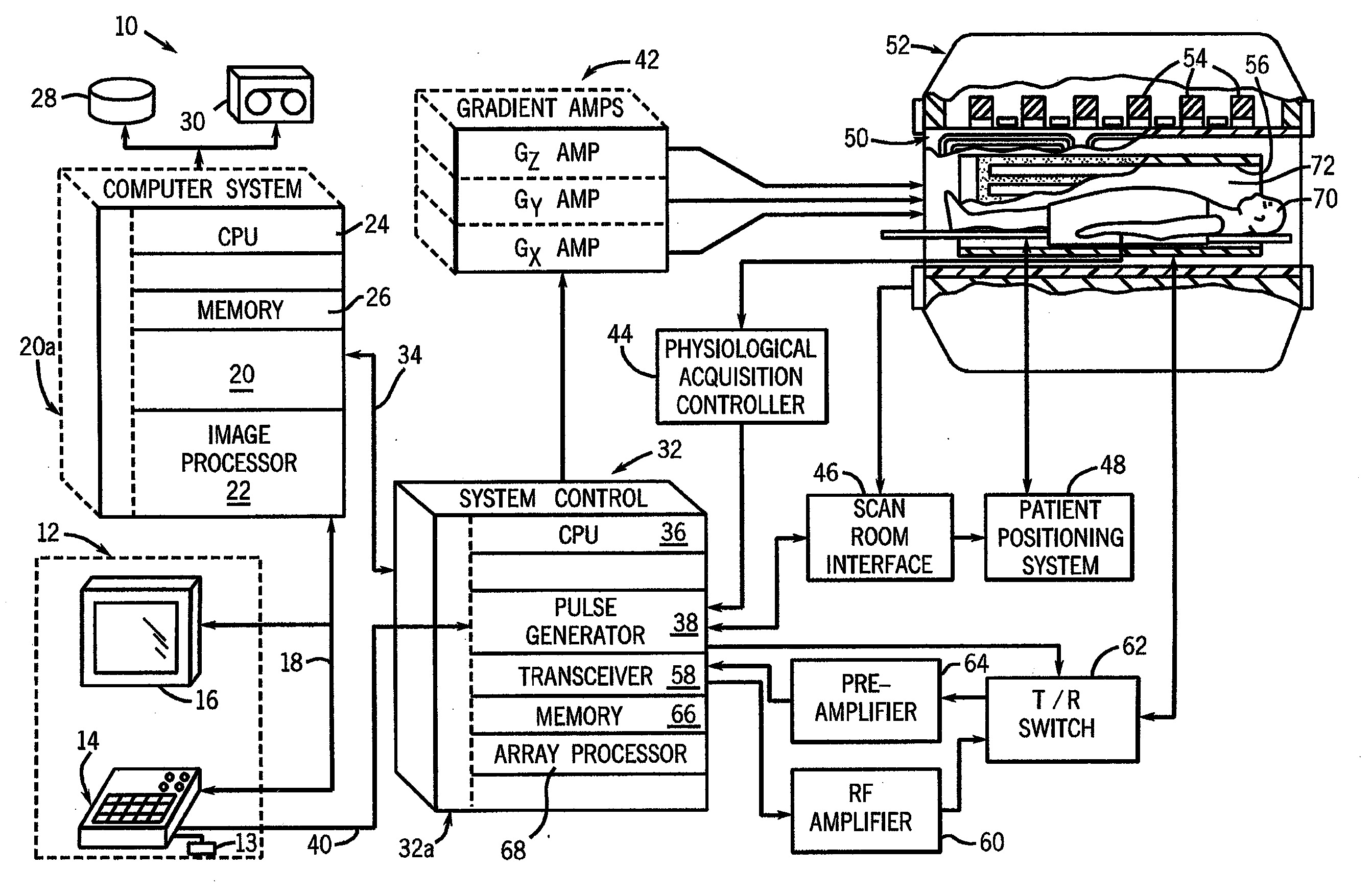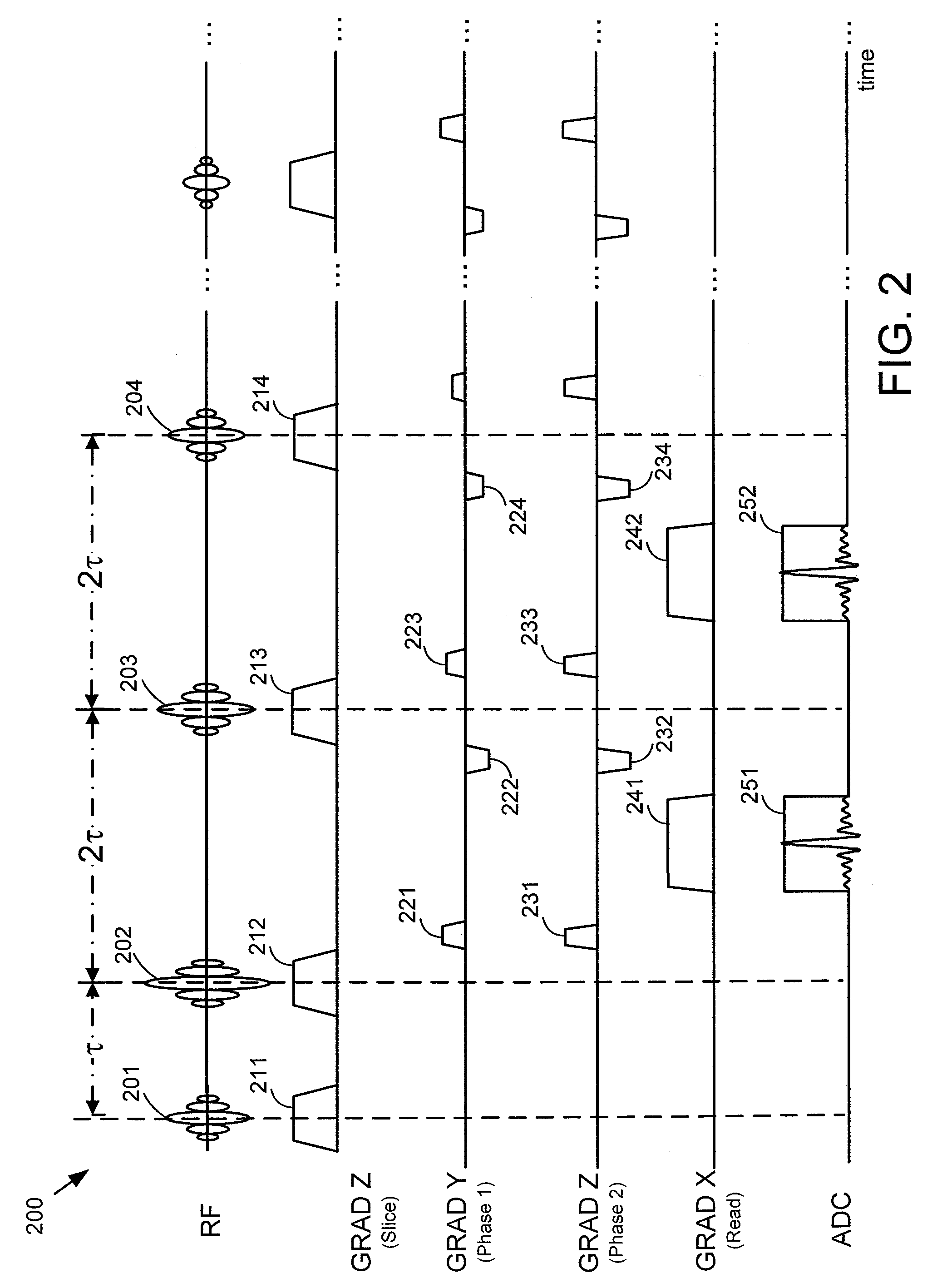Method and apparatus for generating a flip angle schedule for a spin echo train pulse sequence
a pulse sequence and pulse angle technology, applied in the field of magnetic resonance imaging systems, can solve the problem of inability to integrate the strategy, and achieve the effect of reducing the refocusing flip angl
- Summary
- Abstract
- Description
- Claims
- Application Information
AI Technical Summary
Benefits of technology
Problems solved by technology
Method used
Image
Examples
Embodiment Construction
[0021]In the following detailed description, numerous specific details are set forth in order to provide a thorough understanding of embodiments. However it will be understood by those of ordinary skill in the art that the embodiments may be practiced without these specific details. In other instances, well-known methods, procedures, components and circuits have not been described in detail so as not to obscure the embodiments.
[0022]A flip angle schedule for a train of refocusing radio frequency (RF) pulses may be used to control RF power deposition and signal amplitudes for an echo train pulse sequence with reduced (i.e., less than 180°) flip angles. A target “signal” (i.e., signal level or echo magnitude) is defined for each echo in the echo train (e.g., via a target signal schedule) and flip angles are then calculated from the target signals. The target signal schedule includes two phases. In a first phase (Phase I), the target signals drop asymptotically to efficiently establish...
PUM
 Login to View More
Login to View More Abstract
Description
Claims
Application Information
 Login to View More
Login to View More - R&D
- Intellectual Property
- Life Sciences
- Materials
- Tech Scout
- Unparalleled Data Quality
- Higher Quality Content
- 60% Fewer Hallucinations
Browse by: Latest US Patents, China's latest patents, Technical Efficacy Thesaurus, Application Domain, Technology Topic, Popular Technical Reports.
© 2025 PatSnap. All rights reserved.Legal|Privacy policy|Modern Slavery Act Transparency Statement|Sitemap|About US| Contact US: help@patsnap.com



